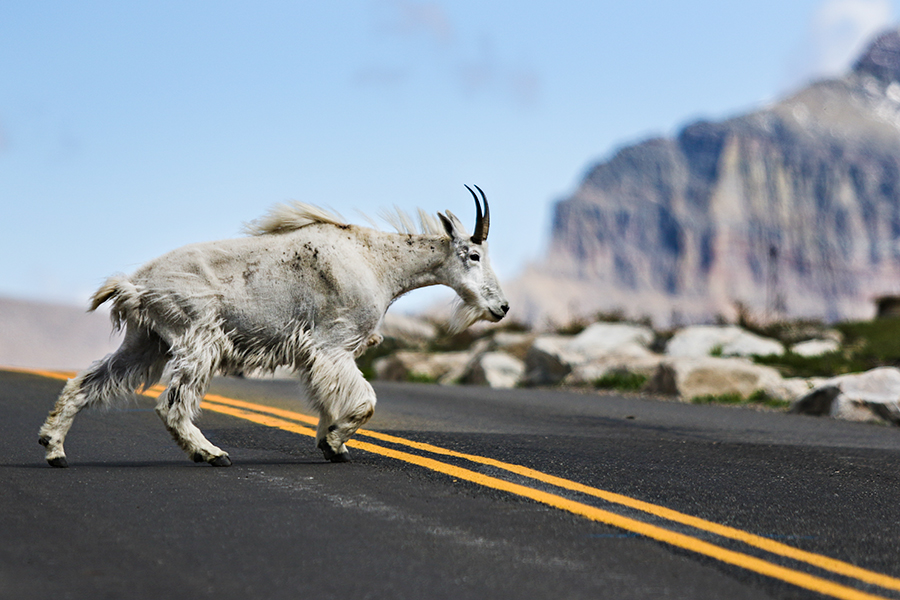
Mapping Glacier’s Wilderness
Researcher assembles Glacier’s first ‘wilderness character map’ that will track changes to the park’s 1 million-acre landscape
In an effort to track changes and threats to Glacier National Park’s wilderness character, researchers are using Geographic Information System (GIS) tools to build a first-of-its-kind mapping framework that digitizes the park’s geospatial data.
The computerized system will show the current extent and magnitude of threats to Glacier’s wilderness character and how they vary across its landscape, more than 90% of which meets the criteria for congressional designation under the Wilderness Act of 1964; while a bill was never enacted by Congress, the park manages its parcels as though it has, according to National Park Service policy.
By creating an array of spatial datasets and processing them into map layers using specialized computer programming, park managers hope to establish a digital baseline that can visually detect changes as they occur, helping define where its wilderness character remains intact, and where it’s begun deteriorating.
GIS Analyst Jillian McKenna began mapping the character of Glacier’s roughly 1 million acres of recommended wilderness this past winter, although the project has long been a priority.
The possibility of incorporating GIS layers into Glacier’s wilderness management protocol was revealed to Wilderness and Wild and Scenic River Coordinator Brad Blickhan at the Aldo Leopold Wilderness Research Institute nearly a decade ago. During a 2012 conference, park scientists presented research on how GIS showed and evaluated different threats to wilderness in Death Valley National Park. The monitoring strategy was developed by an interagency team of wilderness experts to observe trends and changes.
Before McKenna began drafting a character-monitoring plan with Blickhan, she worked as a GIS intern in Yosemite National Park. Once they identified measures and data sources to be included in the map, the two researchers approached Glacier National Park Conservancy Executive Director Doug Mitchell in need of $25,000 to acquire necessary patents and generate additional data for the 21st century tool.
The Glacier Conservancy serves as the park’s nonprofit fundraising partner.
To measure Glacier’s wilderness character, McKenna compiled different monitoring factors, including the use of motorized vehicles and their impacts on ecological processes inside the park, as well as buffers that protect the remote landscape from the sights and sounds of human activity. The assembly of various data sets that already exist, and newer variables that incorporate other tangible qualities into one comprehensive map, will allow researchers to distinguish between untrammeled and impacted areas in the park.
“It would have been great if we had done that in 1974,” said Blickhan, referring to the year former President Richard Nixon recommended Glacier be congressionally designated as wilderness. “We could then see how much change has occurred since then, but this will be a really neat tool for park managers to make sure the most untouched places in Glacier operate unhindered.”
With GIS, planning and operational decision-making becomes more cost-effective and the assessment of trends more consistent. According to McKenna, the map will include a travel-time model so that the map’s software and specified data can measure how long it takes park researchers to access different areas of the park.
“Leadership teams can look at this map and say, ‘How far can I travel to this research site with current snowpack?’ or ‘Can we collect samples from an area that does not have as intact wilderness character?’ That is the goal here,” McKenna said.
The GIS map will also include the park’s patented “Viewshed” model for visibility analysis of manmade infrastructure, which McKenna says is useful for tracking the impacts of a facility or other object, such as water or cell tower, on the scenic landscape.
There is no comprehensive program yet that visually interpolates Glacier’s ongoing wilderness-character research into an exhaustive, park-wide map. Most maps that measure wilderness character are created with GIS and analyze their own measures separately. Unlike Death Valley or other parks, which have received help implementing the computerized program, Glacier is the first park to configure the monitoring strategy independently.
“As far as we know, we’re the first park to be doing it completely on our own,” McKenna said. “It’s been an incredible learning experience figuring it out along the way and hopefully we’ll be able to share what we’ve learned with other parks.”
For Blickhan, the system will provide accountability for the legal and policy mandates “to preserve wilderness character” as part of the Wilderness Act of 1964.
“At the end of the day, the map’s unique visual capabilities will help guide our decision-making when we want to assess the impacts of proposed projects,” Blickhan said. “It will also improve our on-the-ground wilderness stewardship and last over time as personnel change.”
To learn more about the Wilderness Character Mapping project, register for an online zoom Glacier Conversation on Nov. 3 at 6:30 p.m., where Mitchell, of the Glacier Conservancy, and McKenna will discuss her work creating the GIS layered map. https://glacier.org/event/glacier-conversations-jillian-mckenna/